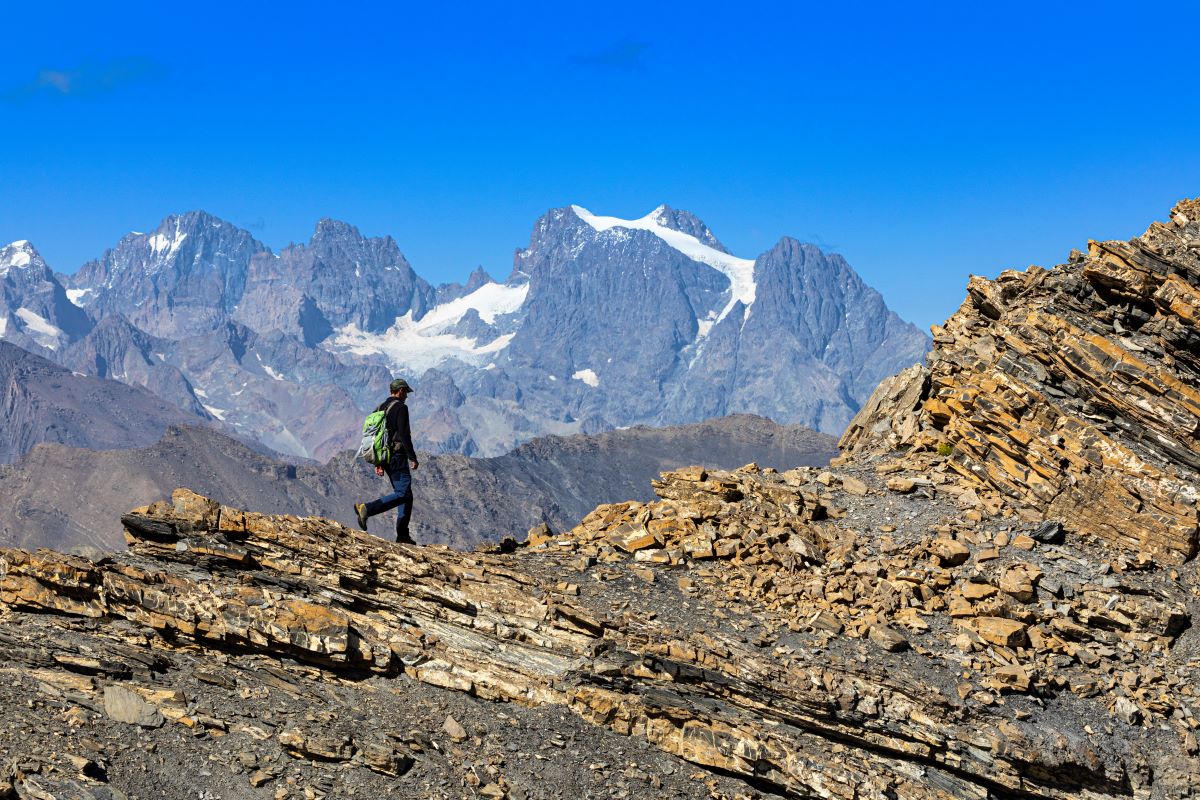
La Tête de Vautisse
"At the foot of the Tête de Vautisse, the stunted vegetation gives way to an almost solely mineral environment. The rock ptarmigan, emblematic species of the high summits lives in such seemingly inhospitable conditions. Groups of several heads are seen on a regular basis.”
Damien Combrisson, warden in the Embrunais area
Description
From the car park, take the footpath on the left of the flat terrain, which leads here and there along the Alp stream with a regular and moderate incline. About 40 minutes further on, the path forks to the left and continues along the Prénetz ridge through black soil. Off a bend, the footpath leads to a terrace (the Selle valley) revealing three small mountain lakes that dry out some years.
- With the lakes to the right, the footpath continues a slight descent, the lowest point of which is the Rougnoux pass. The climb towards the summit starts properly from this pass. Numerous bends mean a relatively steep walk where the incline is generally between 30 and 35°. Shortly before the summit, a terrace will enable you to catch your breath.
- The return trip will be by the same path. A small circuit is also possible from the summit. Leaving the path by which you came on the right, take the stretch of path to the left as far as the Rougnoux pass.
- Departure : L'Alp mountain hut, Réotier
- Towns crossed : Réotier, Saint-Clément-sur-Durance, Châteauroux-les-Alpes, and Champcella
Altimetric profile
Recommandations
The major part of the footpath covers alpine lawns that are grazed by a flock of around 1500 sheep during the mountain pasture period. It is important to respect the shepherd's work, not to scare the animals (in particular the dogs) or separate the flock (by walking though it).
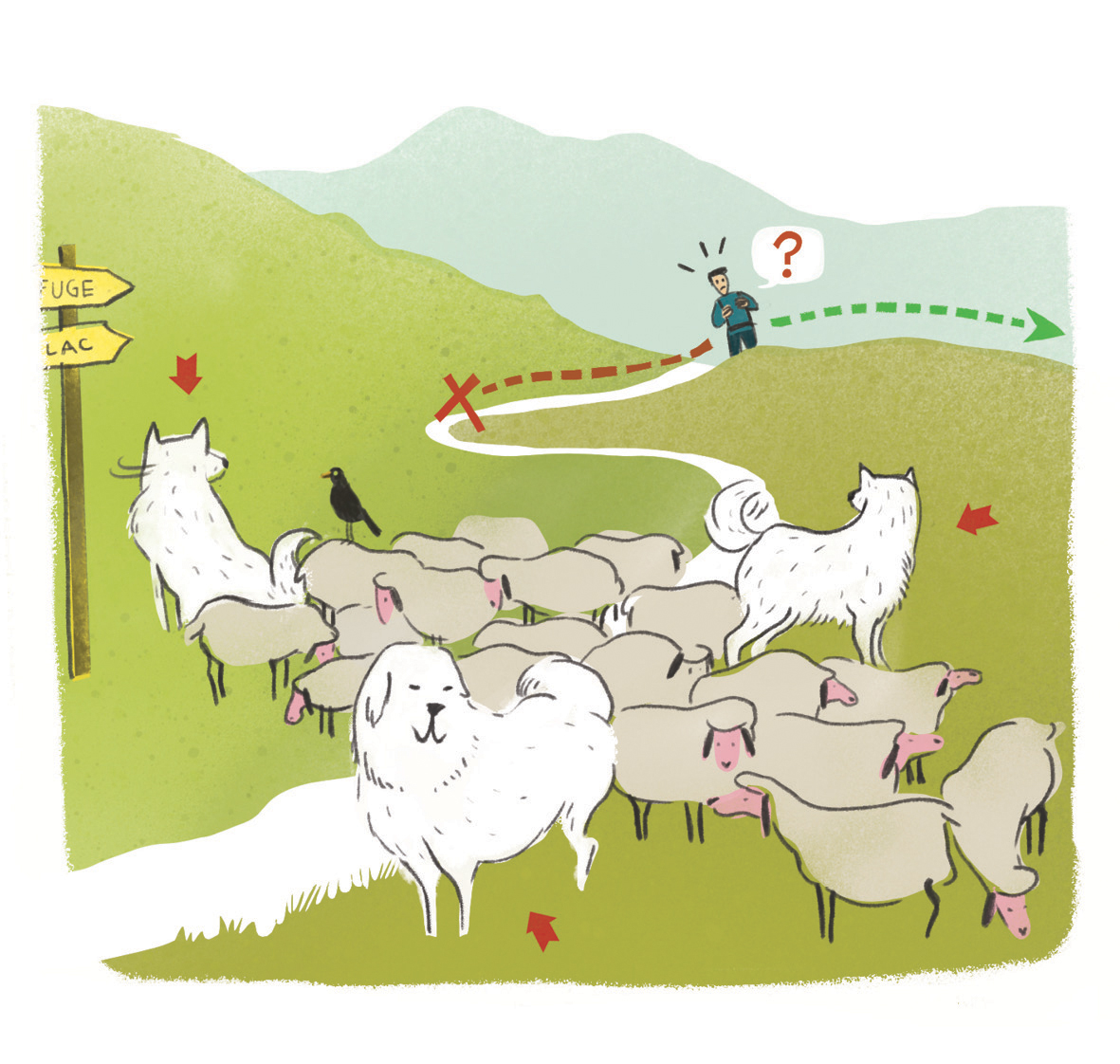 In mountain pastures, protection dogs are there to protect the herds from predators (wolves, etc.).
In mountain pastures, protection dogs are there to protect the herds from predators (wolves, etc.).
When I hike I adapt my behavior by going around the herd and pausing for the dog to identify me.
Find out more about the actions to adopt with the article "Protection dogs: a context and actions to adopt".
Tell us about your meeting by answering this survey.
Information desks
Maison du Parc de l'Embrunais
Place de l’Église, 05380 Châteauroux-les-Alpes
Information, documentation, exhibition, screenings, products and books of the Park. Accessible to people with reduced mobility. Free admission. All animations of the Park are free unless otherwise stated.
Transport
Consider car sharing.
Access and parking
From Montdauphin, take the D37, then the D38 to Réotier. From there, follow the D638 until you reach the hamlet of Les Bruns and take the hairpin to the right towards Mikéou. From Mikéou, follow the track for 2.5 km to the hamlet of Les Eymars and continue towards the Selle mountain hut. You will reach the Alp hut after 9.5 km of winding forestry trails.
Parking :
8 points of interest

Marmotte - Robert Chevalier - PNE  Fauna
FaunaMarmot
The high-pitched cry of the marmot resounds in the pastures. It is a cry to warn of danger. Often, human presence is enough to set of this warning, but it may also be to warn of their ever-present predator, the golden eagle. Look up, the king of eagles is perhaps just above your head!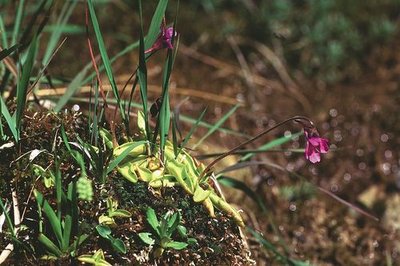
Grassette commune - Jean-Pierre Nicollet - PNE  Flora
FloraButterwort
It pale green, almost yellow leaves are what helps to recognise the butterwort on the waterlogged soil. The sticky surface of its leaves is a real trap for any gnat that ventures there. To compensate for the lack of nitrogen in the damp soils that it prefers, the plant is carnivorous. The edges of streams and springs are heaven for this otherwise discreet plant.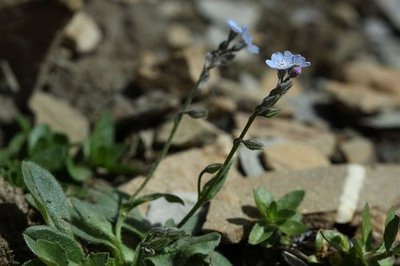
Myosotis des Alpes - Cédric Dentant - PNE  Flora
FloraAlpine forget-me-not
Once it has blossomed, the alpine forget-me-not awaits the snow in small loose tufts among the lawns and rock falls. So as not to suffer frost damage, this small boraginaceae needs its white coat for the winter. Protected in this way, the small blue corolla with a yellow centre will blossom not long after the snow has melted.
Monticole de roche - Pascal Saulay - PNE  Fauna
FaunaCommon rock thrush
Also known as the rock blackbird, the thrush is at home in the alpine meadows that are scattered with rocks, as long as they are in the sun. The male has a particularly colourful plumage with a blue head, an orange belly, and a brown back with a white spot that is visible when it is in flight.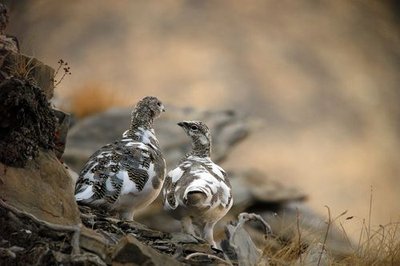
Lagopèdes alpins - Damien Combrisson - PNE  Fauna
FaunaRock ptarmigan
Emblematic species of the high mountain, the rock ptarmigan likes the summits and the bare ridges where it finds its food among the sparse vegetation. Partly vegetated rock falls are equally attractive to this discreet bird. The summer plumage of the rock ptarmigan, which varies from grey for the males to brown for the females (also known as hens), means it is well camouflaged in this habitat. In the winter, the rock-coloured bird will moult and its plumage will become entirely white.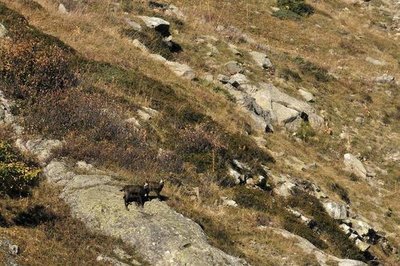
Chamois - Mireille Coulon - PNE  Fauna
FaunaChamois
Present, yet hard to spot, the chamois takes refuge at high altitude during the summer to escape the hot temperatures. The females and the "éterlou" (young male under a year old) like to stay in a large herd whereas the males are more solitary and only join the females for the mating season. It is possible to see them in the Couleau valley that overlooks the Rougnoux pass.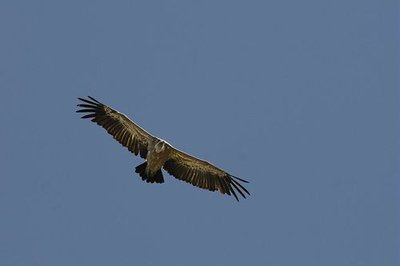
Vautour fauve en vol - Mireille Coulon - PNE  Fauna
FaunaGriffon vulture
The griffon is a newcomer to the Ecrins massifs and is a genuine rubbish collector for the mountains. The corpses of dead animals are swiftly consumed avoiding pollution of the soil or water. This gravedigger reputation means it long caused disgust and fear among humans. It disappeared in the 19th century, and is now present due to reintroduction programmes, dating back to 1980, performed in the Causses and more recently in the Préalpes.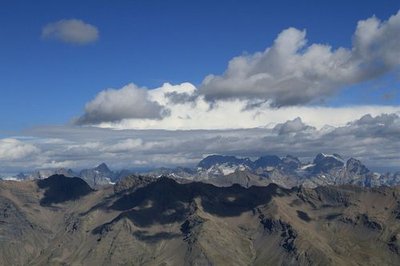
Massif des Ecrins pris de la Tête de Vautisse - Jean-Philippe Telmon - PNE  Panorama
PanoramaPanorama from La Tête de Vautisse
There is a beautiful panorama from the Vautise summit. The Barre des Ecrins can be seen, and in good visibility even the Mont Viso and Mont Blanc.
Source

Report a problem or an error
If you have found an error on this page or if you have noticed any problems during your hike, please report them to us here:

